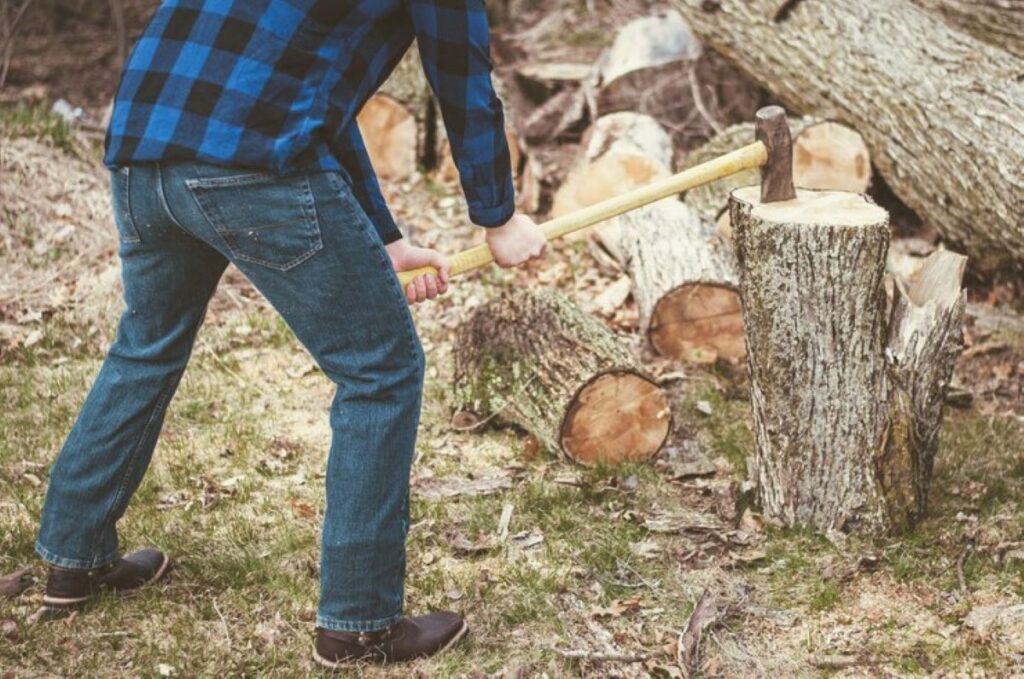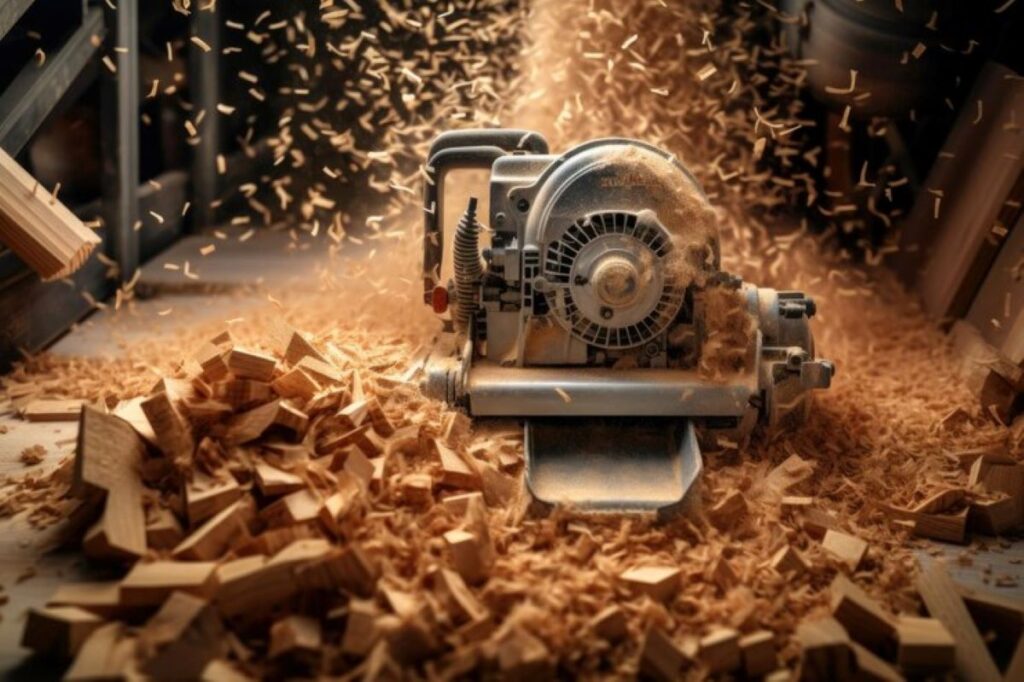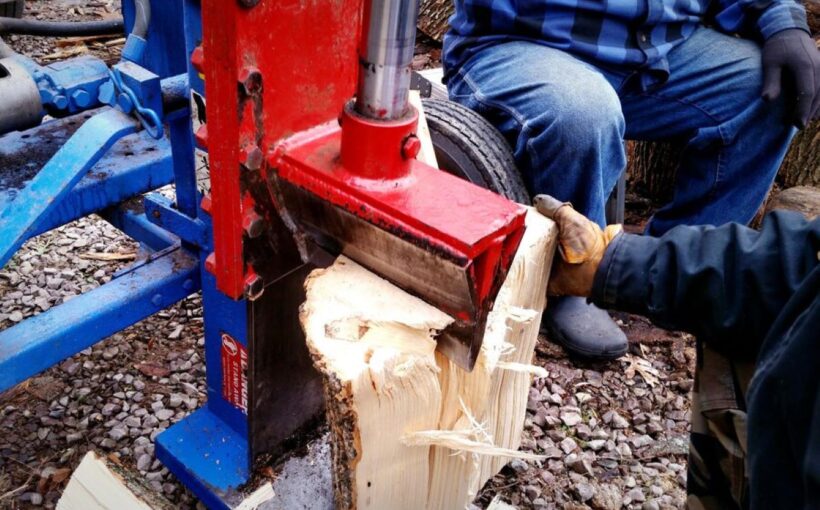Stump grinding is a practical solution for homeowners looking to eliminate tree stumps from their yards. It not only enhances the aesthetic appeal of your landscape but also prevents potential hazards and allows for new planting opportunities. In this article, we will explore the essentials of stump grinding, including safety measures, equipment selection, and a step-by-step guide to get the job done effectively.
Understanding the Basics of Stump Grinding
Before you dive into tree stump removal, it’s essential to understand the fundamental aspects of the process. Stump grinding involves the use of a specialized machine designed to remove tree stumps by grinding them into small chips. This method is less labor-intensive compared to traditional stump removal techniques, which often require digging and can significantly disturb the surrounding soil. Additionally, stump grinding is a more environmentally friendly option, as it minimizes disruption to the ecosystem and allows for a smoother transition for new plant growth.
What is Stump Grinding?
Stump grinding is the process of using a powerful grinder to eradicate a tree stump from the ground. The grinder chips away at the stump, progressively reducing it to a manageable size. This not only removes the unsightly stump but also allows the remaining roots to decay naturally over time, enriching the soil. The wood chips produced during grinding can be repurposed as mulch, providing an excellent resource for landscaping and garden beds, thus contributing to a sustainable approach to yard maintenance.
Why is Stump Grinding Necessary?
Stump grinding serves several essential purposes:
- Improves the aesthetic value of your yard by removing unsightly stumps.
- Reduces the risk of accidents caused by trip hazards.
- Prevents the growth of unwanted sprouting from leftover roots.
- Facilitates easier lawn maintenance, as stumps can interfere with mowing and planting.
Moreover, stump grinding can also play a crucial role in pest management. Tree stumps left to decay can attract various pests, including termites and ants, which may eventually invade your home or other structures. By grinding the stump down, you significantly reduce the risk of these pests establishing a colony in your yard. Furthermore, if you plan to replant in the same area, stump grinding is a vital step to ensure that the new roots have ample space and nutrients to thrive, creating a healthier environment for future growth.
Another important aspect to consider is the timing of stump grinding. While it can be done year-round, certain seasons may be more advantageous. For instance, grinding during the fall or winter months can be beneficial as the ground is often softer, making the process easier and more efficient. Additionally, this timing allows for the natural decomposition of the wood chips to occur before the spring growing season, providing a nutrient boost to the soil just when new plants need it most. Understanding these nuances can help you make more informed decisions about your landscaping projects.
Safety Measures to Consider Before Stump Grinding
Before operating any machinery, especially heavy equipment like a stump grinder, prioritizing safety is crucial. Each year, numerous accidents occur due to improper safety precautions. Understanding these measures can help create a safer working environment.
Personal Protective Equipment for Stump Grinding
Appropriate safety gear should always be worn when grinding a stump. Essential personal protective equipment (PPE) include:
- Safety goggles: Protect your eyes from flying debris.
- Ear protection: Shield your hearing from the loud noise produced by the grinder.
- Heavy-duty gloves: Prevent cuts and bruises while handling equipment.
- Steel-toed boots: Safeguard your feet from falling objects or equipment.
- Hard hat: If working in an area with overhead hazards, this is a must.
Pre-Grinding Safety Checklist
Before starting the stump grinding process, ensure you follow these safety checks:
- Inspect the work area for any overhead wires or obstacles that may interfere with the operation.
- Ensure there are no bystanders within a safe distance; at least 50 feet is recommended.
- Examine the stump for any hidden objects, such as nails or rocks, that could be hazardous.
- Review the operator manual for the stump grinder and understand its controls.
- Make sure all safety features on the machine are functional before use.
In addition to these essential safety measures, it’s also important to consider the environmental conditions before beginning the stump grinding process. For instance, wet or muddy ground can affect the stability of the equipment, increasing the risk of accidents. If the weather is inclement, such as during rain or strong winds, it may be wise to postpone the task until conditions improve. Furthermore, be mindful of the surrounding vegetation and wildlife; ensure that the grinding process does not disturb any nearby plants or animals that could be affected by noise or debris.
Another critical aspect to consider is the proper training and experience of the operator. Stump grinders can be complex machines, and inexperienced users may struggle to handle them safely. It is advisable for operators to undergo training sessions that cover not only the mechanics of the machine but also best practices for safety and efficiency. Additionally, having a buddy system in place, where another person is present to assist and monitor the operation, can significantly enhance safety. This extra set of eyes can help identify potential hazards and provide immediate assistance in case of an emergency.
Choosing the Right Stump Grinder for the Job
Selecting the appropriate stump grinder is crucial for an efficient grinding process. The market offers various options, so understanding your specific needs will guide your choice.

Types of Stump Grinders
Stump grinders generally fall into two categories:
- Walk-behind stump grinders: Ideal for small to medium-sized stumps, these machines are portable and easy to maneuver.
- Tow-behind or self-propelled stump grinders: Designed for larger stumps, these machines are more powerful and can handle tougher grinding jobs.
Factors to Consider When Selecting a Stump Grinder
When selecting a stump grinder, consider the following factors:
- Stump size: Measure the stump’s diameter and assess its depth to determine machine size requirements.
- Terrain: Evaluate the ground conditions; rough, uneven terrain may require a more powerful grinder.
- Power source: Decide between gas-powered or electric options based on your accessibility to power and the scale of the job.
- Ease of use: Look for grinders that are user-friendly, especially if you’re a beginner.
In addition to these factors, it’s also important to consider the weight and portability of the stump grinder. Heavier machines may provide more stability and power, but they can be challenging to transport, especially if you’re working in multiple locations. Conversely, lighter models are easier to move but may lack the power needed for larger stumps. Therefore, assess your transport options and whether you’ll need to navigate through tight spaces or rough paths.
Another significant aspect to keep in mind is the maintenance requirements of the stump grinder. Some models may require more frequent servicing, while others are designed for minimal upkeep. Understanding the maintenance needs can save you time and money in the long run. Additionally, consider the availability of replacement parts and customer support from the manufacturer, as these factors can greatly influence your experience and satisfaction with the equipment. Click the link: https://modon-development.com/same-day-stump-grinding-services-fast-solutions-for-tree-stumps/ to get about the fast solutions for your tree stumps.
Step-by-Step Guide to Stump Grinding
Now that you have the necessary knowledge and equipment, it’s time to get into the step-by-step guide for effectively grinding a stump.
Preparing the Stump for Grinding
Start by preparing the work area and the stump. Follow these steps:
- Clear the area around the stump of any debris or obstacles to ensure safe access.
- Use a shovel to remove soil around the base of the stump, exposing the roots.
- If applicable, assess and cut any visible roots that may hinder the grinding process.
It’s also a good idea to wear protective gear during this preparation phase. Safety goggles, gloves, and sturdy footwear can help protect you from flying debris and sharp tools. Additionally, consider marking the area with cones or flags to alert others of the ongoing work, especially if you are in a shared space or near a public pathway. This not only enhances safety but also helps in maintaining a clear work zone, minimizing the risk of accidents.
Operating the Stump Grinder
With the preparation complete, follow these operational tips:
- Start the stump grinder following the manufacturer’s instructions.
- Position the grinder at the base of the stump, slightly angled toward it.
- Gradually lower the grinder’s blade onto the stump and begin grinding.
- Instead of grinding the entire stump in one go, work in a back-and-forth motion, gradually lowering the grinder into the stump.
- Periodically check for any roots that need additional trimming during the process.
While operating the stump grinder, it’s crucial to maintain a steady pace and avoid rushing through the process. Each stump is different, and some may have larger or deeper roots than anticipated. Take your time to ensure that you grind down to the desired depth, typically around 4 to 6 inches below ground level, to prevent any regrowth. Moreover, be mindful of your surroundings; keep an eye out for any underground utilities or irrigation systems that may be affected by your grinding efforts.
Post-Grinding Cleanup
Once grinding is complete, here are the final steps:
- Shovel away excess wood chips from around the stump area.
- Fill the hole left by the stump with topsoil, compost, or mulch, to encourage new plant growth.
- Inspect the area for any remaining roots or debris and remove as necessary.
After the cleanup, consider the future of the space where the stump once stood. Depending on your landscaping goals, you might want to plant a new tree or shrub in the area, or perhaps create a small garden bed. Adding a layer of mulch not only enhances the aesthetic appeal but also helps retain moisture and suppress weeds. Furthermore, it’s beneficial to monitor the area over the next few weeks for any signs of regrowth from remaining roots, as this can inform your next steps in maintaining a tidy and healthy landscape.

Troubleshooting Common Stump Grinding Problems
Despite your preparation, you might encounter some challenges while stump grinding. Here are common issues and solutions.
Dealing with Large Roots
As you grind, you may encounter large roots that can hinder the process. Here’s how to manage them:
- Use a chainsaw to cut the roots down to a manageable size before using the grinder.
- Consider a heavier-duty stump grinder for larger roots which can provide the necessary power.
- Pace yourself and grind away at the roots gradually rather than forcing the machine through.
Overcoming Hard Soil Conditions
Hard or compacted soil can make stump grinding more challenging. Here are a few tips to address this issue:
- Water the soil around the stump the day before grinding to soften it.
- Test to ensure the stump grinder’s blade is sharp, as dull blades struggle in hard soil.
- If resistance continues, try breaking up the soil around the stump using a shovel or pickaxe.
By understanding the fundamentals of stump grinding, prioritizing safety, choosing the right equipment, and following a thorough guide, you’ll be well-equipped to tackle your stump removal project successfully. Happy grinding!
